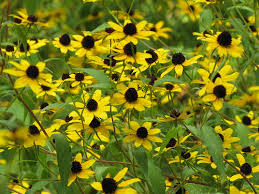|
A native plant is one which occurred within this region before settlement by Europeans. Native plants include ferns and clubmosses; grasses, sedges and rushes; perennial and annual wildflowers; and the woody trees, shrubs, and vines which covered “Penn’s Woods” when the first settlers arrived. There are 2,100 native plant species known in Pennsylvania.
An introduced or non-native plant is one that has been brought into the state and escaped cultivation to become established in the wild. At the turn of the 21st century, about 1,300 species of nonnative plants existed in Pennsylvania outside of gardens, parks and agricultural lands. That is 37 percent of Pennsylvania’s total wild plant flora. More introduced plants are identified every year. Six Basics of Plant Conservation 1. Protect native plant communities and minimize habitat destruction The most important guideline is to conserve already existing areas of native vegetation as a whole, functioning unit. The easiest, least expensive, and best way to conserve Pennsylvania's plant heritage is to protect existing native plant communities from further disturbance. If disturbance is necessary, strive for minimum habitat destruction. In some cases ecological restoration may be necessary, which can include planting native species, removing invasive introduced species, controlling erosion and loosening soil compaction. 2. Landscape with native plants Native plant communities have been destroyed in many areas. Intelligent landscaping in parks, yards and campuses can help redress this loss. Well-chosen native plants can flourish in these landscapes. The Department of Conservation and Natural Resources (DCNR)-Bureau of Forestry (BOF) recommends avoiding rare, endangered, and threatened plants and instead choosing native plant species which grow commonly throughout the state. If you do not want all natives, plant adapted introduced plants suited for the site, colorful annuals, or flowering plants that will not escape and become environmental weeds. 3. Learn more about native plants Learn what plants are native in your area. There are many field guides to wildflowers that can get you started. 4. Buy nursery-propagated native plants Most retail nurseries and mail-order catalogs now offer native plants. The more consumers request native plants, the more this supply will grow. If you want guaranteed ornamental characteristics, cultivars (named varieties) are available in some cases; for instance, A cultivar of New England Aster named 'Purple Dome', was selected for shorter height and showier flowers. Cultivars should be predictable in attributes like height, color, blooming period, or absence of seed pods/thorns--qualities many gardeners want. If your goal is genetic diversity, however, ask for straight species, not cultivars, grown from local seed sources. Plants grown from seed have much more variety than cloned cultivars. 5. Do not remove native plants from the wild Taking native plants from the wild depletes native populations. Also, many wild-collected plants do not survive transplanting. Prevent wild-collecting of plants by making sure that plants you buy are propagated at a nursery, or by starting plants yourself from a local seed supply. Before you collect seed always obtain the property owner's permission. 6. Practice responsible landscaping techniques The first rule of responsible landscaping is to plant the right plants in the right environment: never introduce invasive plants to your landscape that will aggressively spread off your property and invade native plant communities. They can drastically alter ecosystems and give you and your neighbors maintenance headaches for years to come. When landscaping with native plants it is important to choose plants that will grow well at the site: wet or dry, shade or sun, acid or neutral soil. A good trick is to notice which native plants are thriving nearby, and to use those clues to guide plant selection. Other information can be found from plant nurseries, catalogs, books, or the Internet. For soil fertility, compost and mulch of leaves or grass clippings provide slow release nutrients. Chemical fertilizers often provide too many nutrients too quickly for native plants, and this flush of nutrients gives weeds a competitive edge. Proper site preparation begins with a soil test before applying fertilizer. Try organic pest control. Keep the soil covered to prevent weeds. Remove invasive plants nearby. Take out severely diseased plants, or ones with insect infestations. Many native plants attract beneficial insects which help control pests, so try creating habitat for "good bugs."
0 Comments
Leave a Reply. |
Archives
June 2016
Categories
All
|

 RSS Feed
RSS Feed
